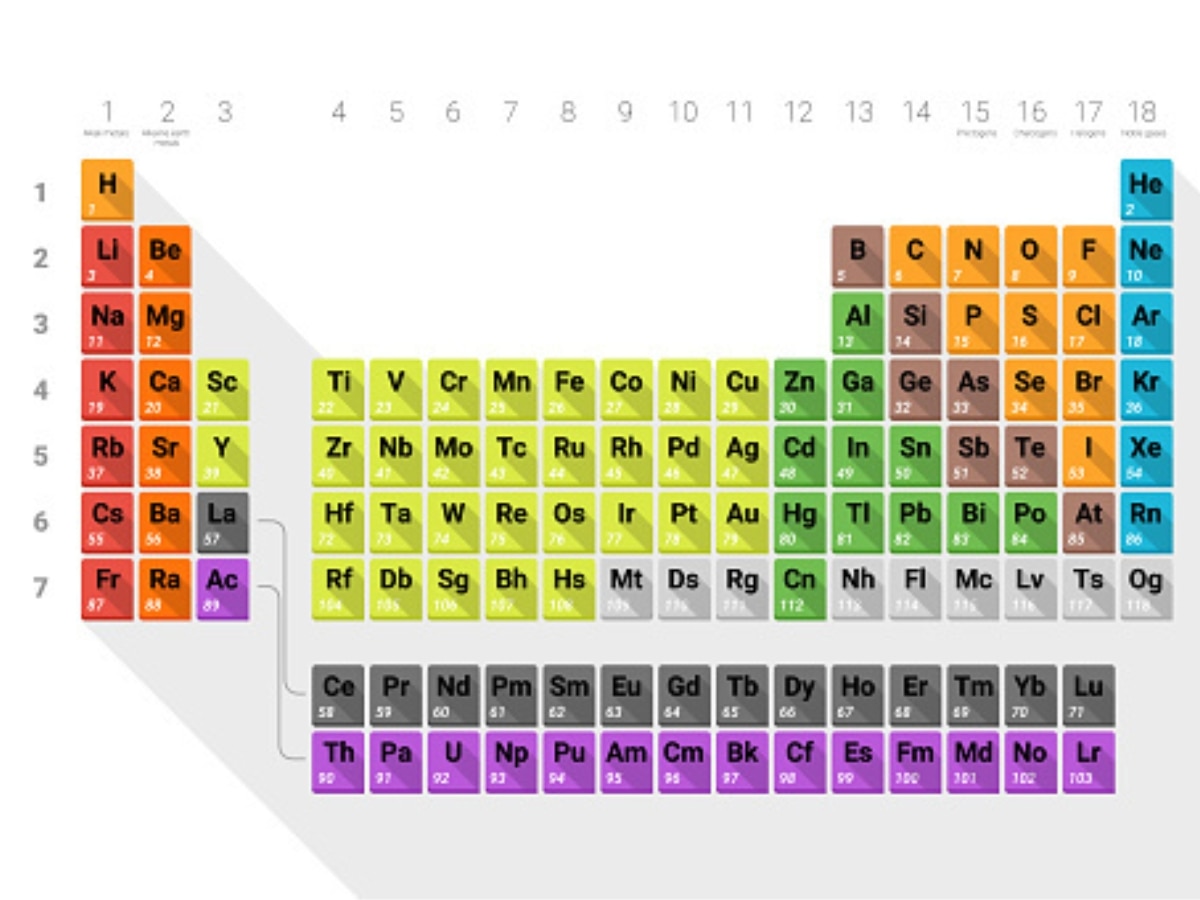Science For Everyone: How The Periodic Table Arranges The Elements, And Its Significance
Science For Everyone: The periodic table is an arrangement of all the known elements that make up the universe. As we know, an element is a substance that cannot be broken down into simpler substances

Science For Everyone: Welcome back to "Science For Everyone", ABP Live's weekly science column. Last week, we discussed why colonising Mars is still a far-fetched idea, and the challenges that must be overcome before living on the Red Planet becomes a reality. This week, we discuss what the periodic table is, and its significance.
The periodic table is in the news because it has been dropped from Class X NCERT textbooks. However, it remains a part of the syllabus for Class XI.
What the periodic table means

The periodic table is an arrangement of all the known elements that make up the universe. As we know, an element is a substance that cannot be broken down into simpler substances. More complex substances are a combination of two or more elements, and are called compounds. For example, water is a compound that is formed by the combination of atoms of hydrogen and oxygen, both of which are elements.
In the periodic table, elements are arranged in a certain order. In the 19th century, scientists had found that if they arranged the elements in the order of their atomic masses, the properties of the elements showed a “periodicity”. In other words, the chemical properties of an element would be repeated, or be largely similar, in another element after a certain number of entries.
Therefore, it was possible to group these elements into columns. A certain number of elements, each with different properties, would be ordered in a row. When the next element would have similar properties with an earlier element, it would be entered in the net row, but below the earlier element in the same column.
ALSO READ | Explained: What Is Chandrayaan-3? ISRO's Moon Mission Set To Launch In July To Analyse The Lunar Surface
How it was created
In 1869, when Dmitri Ivanovich Mendeleev, a Russian chemist, created the periodic table, he chose not to arrange the elements exactly according to their atomic weights. He chose to rely more on chemical properties instead.
While most of the elements were indeed arranged according to their atomic weights, some elements did not follow the rule of periodicity. For example, tellurium has a higher atomic mass than iodine, but Mendeleev placed it before iodine, so that each element would be placed directly below another element with similar properties. Tellurium went into position 52 and iodine into 53.
These are known as the atomic numbers of the elements. Mendeleev, who introduced the concept, gave an atomic number to each known element. In some cases, this left empty positions in the periodic table. There should have been a certain element with that atomic number, and should have some predictable properties, but they had not yet been discovered.
Mendeleev was right. He had predicted the existence of elements with atomic numbers 23, 31 and 32, and what properties they should exhibit. Scandium (23), gallium (31) and germanium (32) were discovered during Mendeleev’s lifetime.
Discovery of more elements
Once it was possible to predict the existence of an element that had so far been unknown, scientists around the world searched for these elements. Between 1899 and 1945, a number of them were discovered, including those with the atomic numbers 43, 61, 72, 75, all elements from 84 to 88, and 91.
Two of the most important discoveries were the elements with the atomic numbers 84 (polonium) and 88 (radium). They were isolated by Marie and Pierre Curie in 1898. They found that the mineral pitchblende, which contains uranium, was emitting more radioactivity than the uranium could account for. Deducing that the mineral must contain at least another radioactive element, they searched for it, working with very simple equipment in a small shed. They discovered the two elements, and won the Nobel Prize for Chemistry in 1903 (Marie Curie also won the 1911 Nobel for Physics, after her husband’s death).
Experiments with X-rays, too, contributed to some of the discoveries. Scientists found that when X-rays were scattered from different metals, the wavelengths of these rays depended on the position of the element in the periodic table. From this knowledge, they were able to calculate if there were any missing slots in the periodic table.
As the missing elements were found one by one, all elements from atomic numbers 1 (hydrogen) to 92 (uranium) were placed in the periodic table. As it was understood that bombarding certain elements with particles could result in higher elements, such experiments resulted in more elements beyond atomic number 92. At present, the periodic table has 118 elements.
ALSO READ | Explained: What Is Human Metapneumovirus? The Pathogen Whose Cases Saw A Recent Surge In The US
Electrons and atomic numbers
As discussed earlier, Mendeleev introduced the concept of atomic numbers based on the properties of the elements. At that time, the structure of the atom was not fully clear. In later years, the discovery of the electron established the true significance of the atomic number.
The atomic number of an element is the same as the number of electrons in an atom of that element. Further, it was found that the electrons are arranged in a number of shells. The electrons in the outermost shell give each element its chemical properties.
When elements are clubbed together in the same column, it means that they have the same number of electrons in their outermost shells. Therefore, we now know why the elements can be arranged into neat groups. In that way, the periodic table is a collection of all known elements, and an explanation of the properties of each one of them.







































